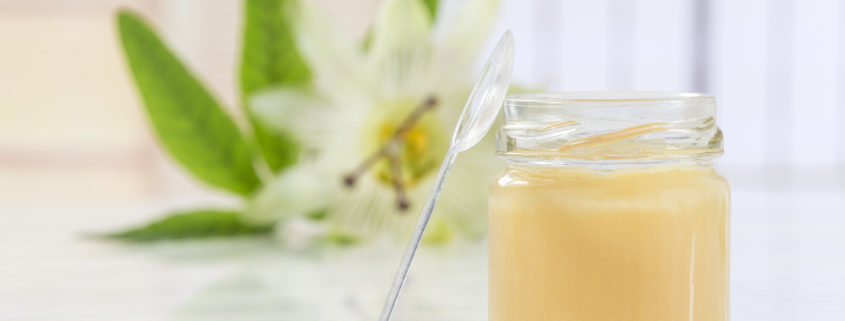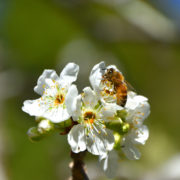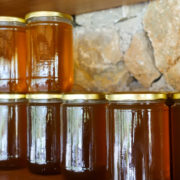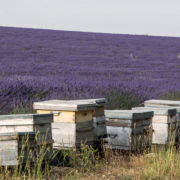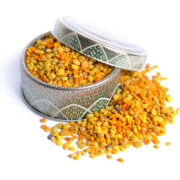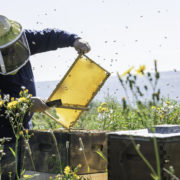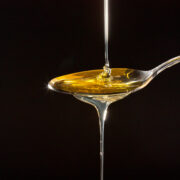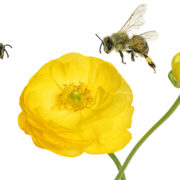Royal Jelly
While a larva is developing into a queen cell, nurse bees feed the larva with abundant amounts of a milky white gel, known as royal jelly. Royal jelly is a high protein food (12% protein) that is also loaded with amino acids, B vitamins and trace minerals – a sort of superfood for insects! Humans eat it too. If you watch enough infomercials, eventually you can’t help but to run across one touting the many benefits of royal jelly: “Royal jelly makes bees into royalty! It’s magic. Try it. You’ll have energy to burn!”
Is this true? At Wildflower Meadows, we’ve eaten our share of royal jelly, cutting it out from unwanted queen cells and eating it fresh from the hive. We have found that it doesn’t taste all that great, but it does seem to provide a nice jolt to the system. We would rather not tell anyone, however. The Federal Drug Administration has concluded that there is no human benefit to taking royal jelly. Furthermore, they threaten legal action against any person or company making unfounded claims to its benefits.
Lets face it: royal jelly was meant to be more of an insect food rather than a human food, as its presence causes a larva to develop into a queen bee rather than a worker bee.
Scientists have recently identified the component of royal jelly that is responsible for this caste differentiation. It is a protein called “royalactin”, which induces the differentiation of honeybee larvae into queens. Royalactin increases body size and ovary development and shortens developmental time in honeybees. We find it amazing that a single substance can initiate the development of such a truly magnificent and royal creature as the queen honeybee.

